Mexican-inspired tattoos have become increasingly popular in recent years, serving as a powerful form of self-expression and storytelling. Rooted in the rich cultural heritage of Mexico, these tattoos are more than just ink on skin; they embody the history, traditions, and elements that define Mexican culture. From intricate Day of the Dead designs to bold images of iconic figures like Frida Kahlo, Mexican-inspired tattoos offer a visual narrative that reflects an individual’s connection to their heritage.
Each tattoo carries its own unique story and meaning, representing personal experiences, beliefs, or significant moments in one’s life. These vibrant designs often incorporate symbolic elements such as sugar skulls, Aztec motifs, or traditional folk art patterns. They serve as a visual representation of pride and belonging to a community deeply rooted in tradition and celebration.
Join us on this journey as we uncover the power and beauty that lies within these captivating works of art.
Contents
- 1 The Rich Tapestry of Mesoamerican Tattoos
- 2 La Calavera Catrina and Mexican Skull Imagery
- 3 Celebrating Tradition with La Loteria and Papel Picado Tattoos
- 4 Chicano Tattoo Style: Influences and Notable Artists
- 5 Hummingbird and Natural Motifs in Mexican Tattoo Art
- 6 Religious Symbolism: Virgin Mary and Beyond
- 7 Honoring Heritage with Family and Cultural Tattoos
- 8 Mexican Artistry: Huichol Influence and Iconic Figures
- 9 Incorporating Mexican Folk Art into Modern Tattoos
- 10 Conclusion
- 11 Frequently Asked Questions
- 11.1 FAQ
- 11.2 What are Mesoamerican tattoos?
- 11.3 What is the significance of La Calavera Catrina in Mexican tattoo art?
- 11.4 What are some popular Mexican tattoo motifs?
- 11.5 Who are some notable artists in Chicano tattoo style?
- 11.6 How does religious symbolism manifest in Mexican tattoo art?
- 11.7 How can Huichol influence be seen in Mexican tattoo art?
- 11.8 How is Mexican folk art incorporated into modern tattoos?
The Rich Tapestry of Mesoamerican Tattoos
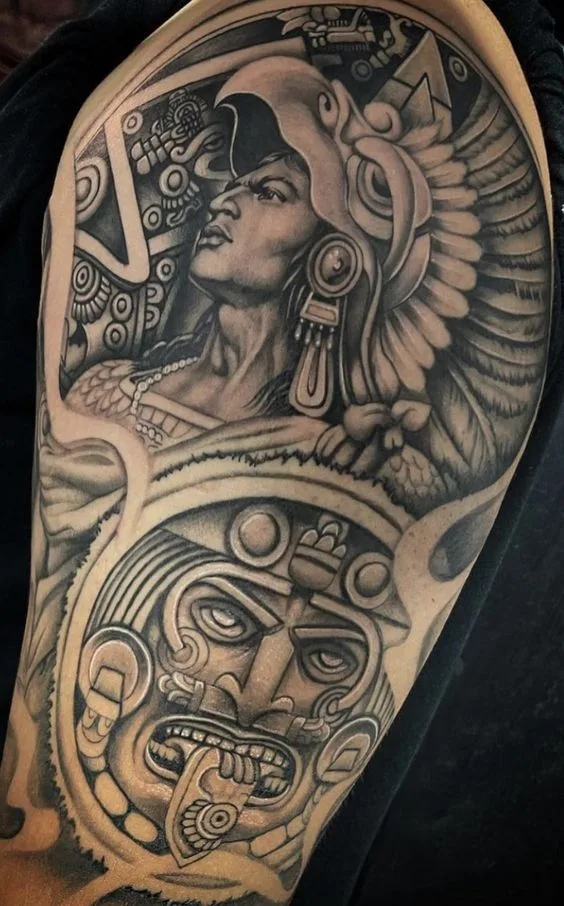
Mesoamerican tattoos are deeply rooted in the ancient civilizations of the Aztecs and Mayans, creating a rich tapestry of cultural significance and symbolism. These tattoos draw inspiration from the art, beliefs, and traditions of these indigenous peoples, resulting in a unique style that captivates many tattoo enthusiasts.
Ancient Inspiration: Aztecs and Mayans
Mesoamerican tattoos pay homage to the ancient civilizations that once thrived in what is now modern-day Mexico and Central America. The Aztecs and Mayans left behind a legacy of incredible artistry, architecture, and mythology that continues to influence contemporary culture.
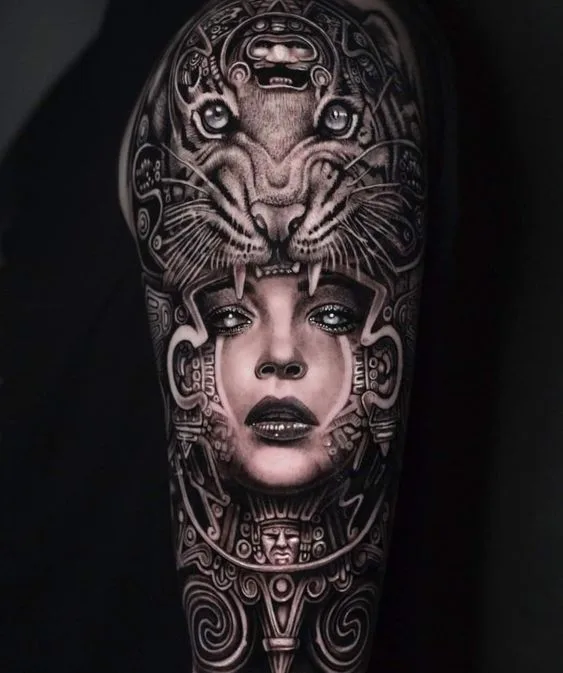
Symbolism in Mesoamerican Tattoos
Symbols play a significant role in Mesoamerican tattoos, with each carrying its own meaning and significance. Some commonly used symbols include:
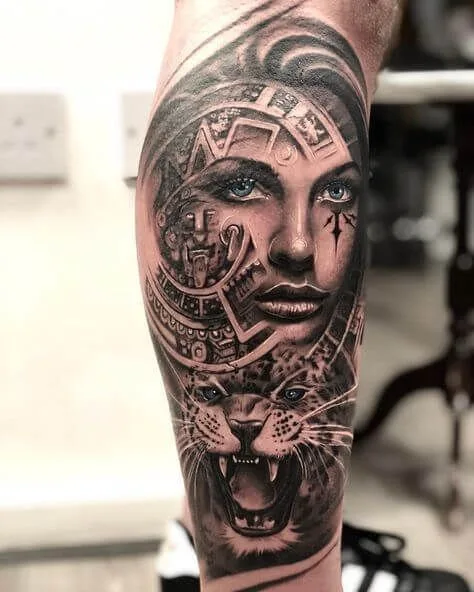
- Sun: Representing energy, life force, and power, the sun holds great importance in Mesoamerican culture. It symbolizes vitality, growth, and renewal.
- Serpent: The serpent is a powerful symbol associated with transformation, wisdom, and rebirth. It represents both the earthly realm as well as the spiritual world.
- Jaguar: Known for its strength and agility, the jaguar is often depicted as a fierce guardian spirit or deity. It embodies power, protection, and courage.
- Feathered Serpent: This mythical creature combines elements of both serpents and birds. It represents balance between opposing forces such as earth and sky or lightness and darkness.
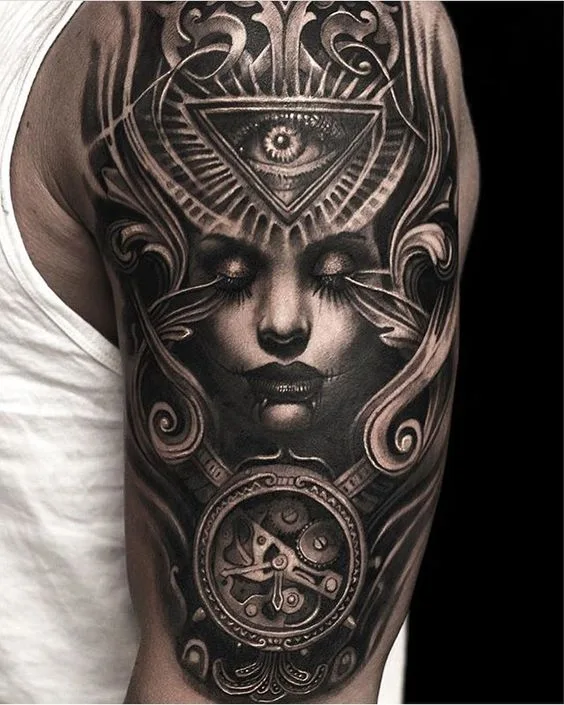
Concepts Portrayed by Mesoamerican Tattoos
Mesoamerican tattoos convey various concepts deeply ingrained in their respective cultures:
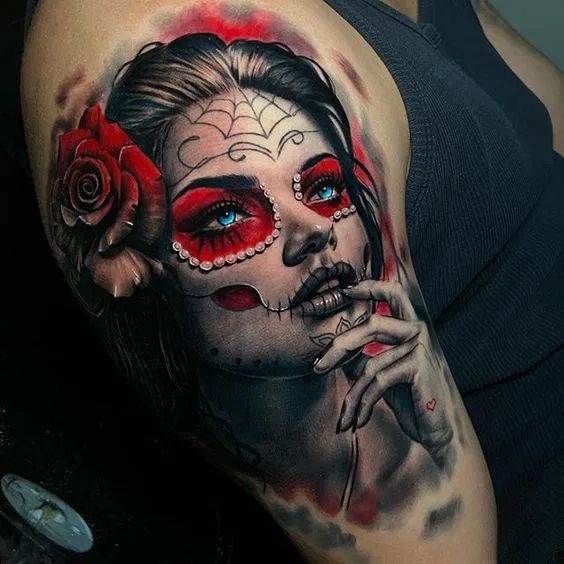
- Power: Many Mesoamerican tattoos evoke a sense of power through their bold designs and strong symbolism. They serve as visual representations of personal strength or connection to ancestral power.
- Spirituality: These tattoos often carry spiritual significance, reflecting the deep-rooted belief systems of the Aztecs and Mayans. They can symbolize a connection to higher realms, ancestral spirits, or specific deities.
- Protection: Mesoamerican tattoos were often believed to offer protection against evil spirits or negative forces. They were seen as a form of armor, safeguarding the wearer from harm.
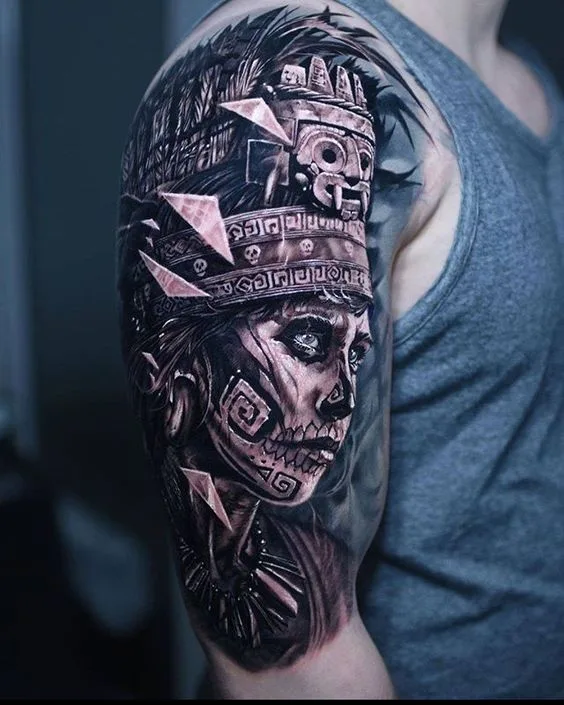
The intricate details and vibrant colors found in Mesoamerican tattoos are reminiscent of the region’s rich cultural heritage. As with any tattoo style, it is essential to research and collaborate with an experienced tattoo artist who specializes in this particular style to ensure that the design accurately represents your desired symbolism.
La Calavera Catrina and Mexican Skull Imagery
La Calavera Catrina, also known as the Elegant Skull, is an iconic symbol of Mexican culture that has become a popular choice for tattoos. This elegantly dressed skeleton figure was created by Mexican artist José Guadalupe Posada in the early 20th century. It represents the idea that death is a part of life and serves as a reminder to celebrate and honor our ancestors.
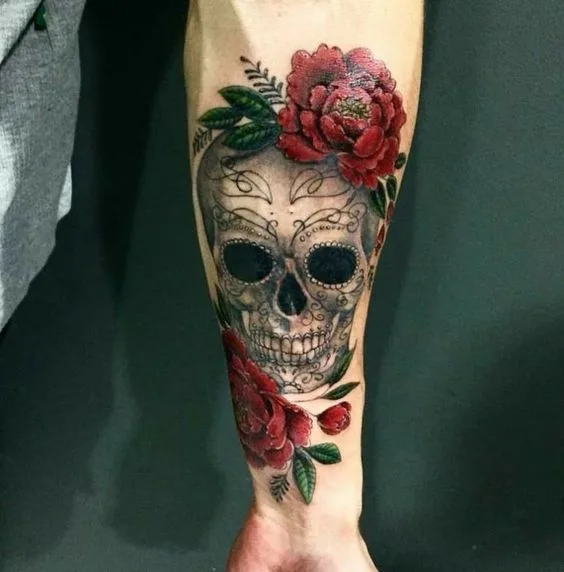
Mexican skull imagery, including La Calavera Catrina, is deeply rooted in the celebration of life and death in Mexican traditions. These tattoos often feature intricate designs with vibrant colors and floral patterns. They are a way for individuals to pay homage to their heritage while embracing the beauty of both life and death.
One popular motif within Mexican skull tattoos is sugar skulls, or calaveras de azúcar. These decorative skulls are made from sugar and are commonly seen during the Day of the Dead (Día de los Muertos) festivities in Mexico. Sugar skulls are intricately decorated with colorful icing and represent departed souls. In tattoo form, they serve as a symbolic representation of remembrance and honoring loved ones who have passed away.
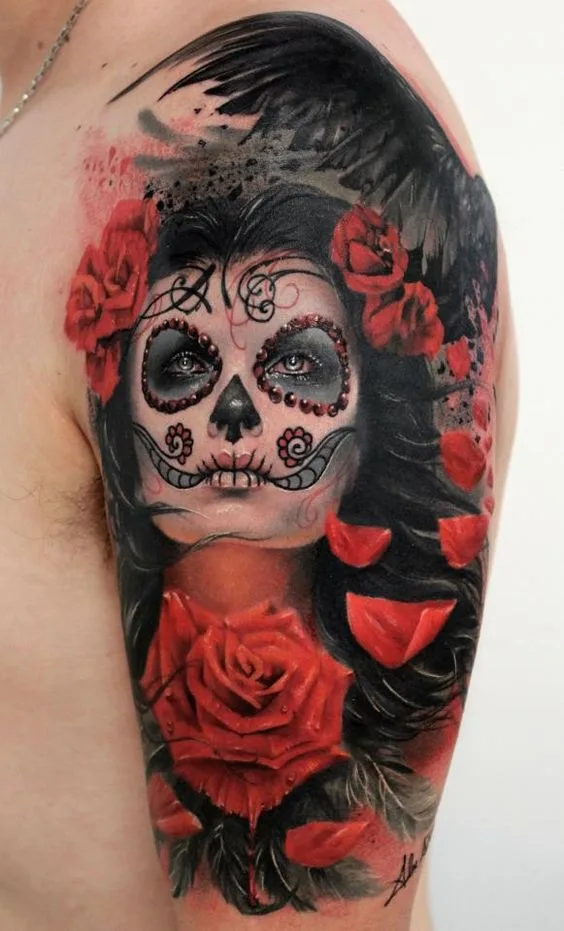
The imagery associated with Mexican skull tattoos goes beyond just skulls; it often includes other elements such as skeletons, masks, or traditional Mexican symbols like marigold flowers or crosses. These additional elements add depth and meaning to the tattoo design, allowing individuals to personalize their ink while staying true to the essence of Mexican culture.
Mexican skull tattoos have gained popularity not only among those with Mexican heritage but also among people from various backgrounds who appreciate the rich symbolism behind these designs. Social media platforms like Instagram have played a significant role in showcasing these stunning tattoos to a wider audience.
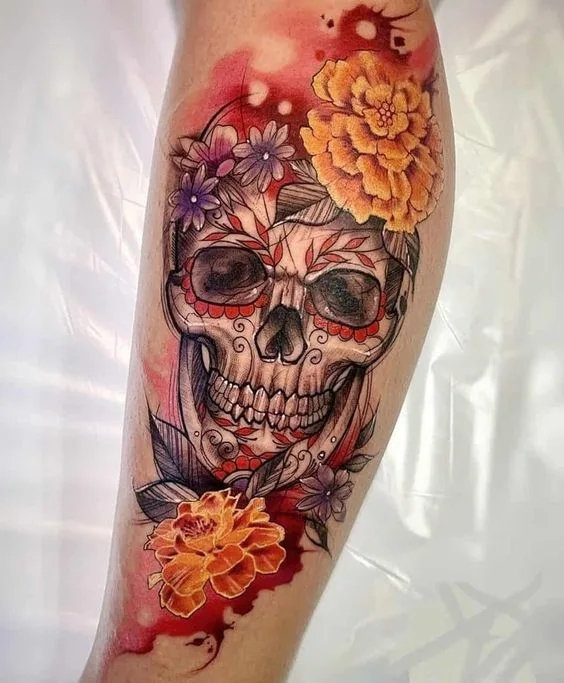
Many tattoo artists specialize in creating authentic Mexican-inspired designs that capture the essence of La Calavera Catrina and other elements of Mexican culture. They use their skills to bring these vibrant and meaningful tattoos to life, ensuring that each piece is a unique work of art.
Celebrating Tradition with La Loteria and Papel Picado Tattoos
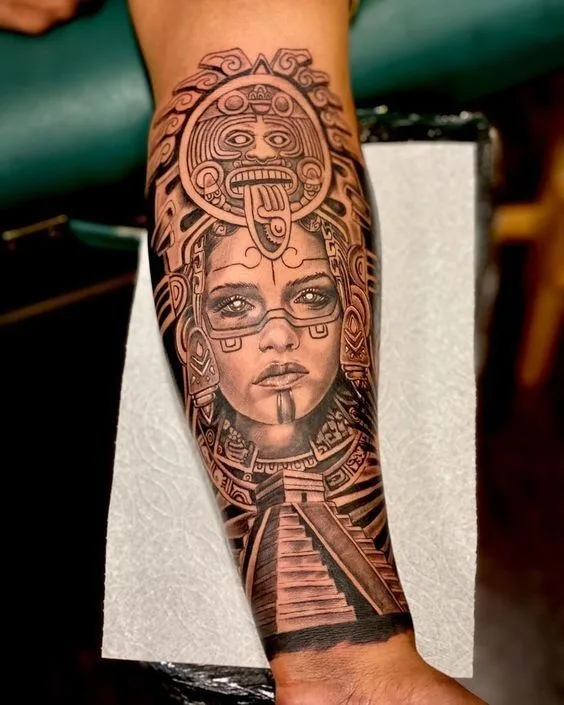
La Loteria tattoos and Papel Picado tattoos are two popular styles of Mexican-inspired tattoos that have gained significant attention in recent years. These unique tattoo designs showcase the rich cultural heritage of Mexico, allowing individuals to honor and celebrate traditional Mexican traditions through body art.
La Loteria tattoos feature images from the traditional Mexican card game.
La Loteria is a beloved card game that originated in Mexico during the late 18th century. It consists of a deck of cards, each featuring a different image and corresponding name. These cards are used to play a game similar to bingo or lotto, with players marking off the called cards on their individual boards.
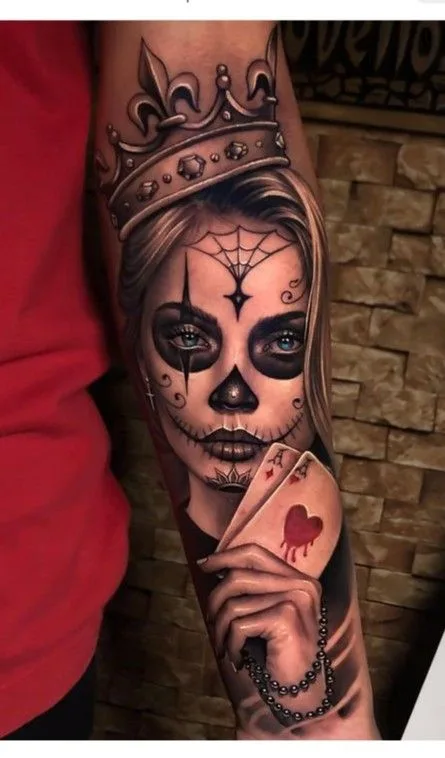
In recent years, La Loteria has become more than just a game; it has become an iconic symbol of Mexican culture. Many people choose to get La Loteria-inspired tattoos as a way to pay homage to their heritage or simply appreciate the beautiful artwork associated with this traditional card game. From El Catrin (The Gentleman) to La Sirena (The Mermaid), each card offers its own unique design and symbolism for tattoo enthusiasts.
Papel Picado tattoos showcase intricate designs inspired by colorful paper cutouts used in celebrations.
Papel Picado is another cherished tradition in Mexico, where colorful paper cutouts are created and displayed during various celebrations and holidays. These delicate paper designs often depict flowers, animals, religious symbols, or geometric patterns and are hung on strings across streets, homes, or altars as decorations.
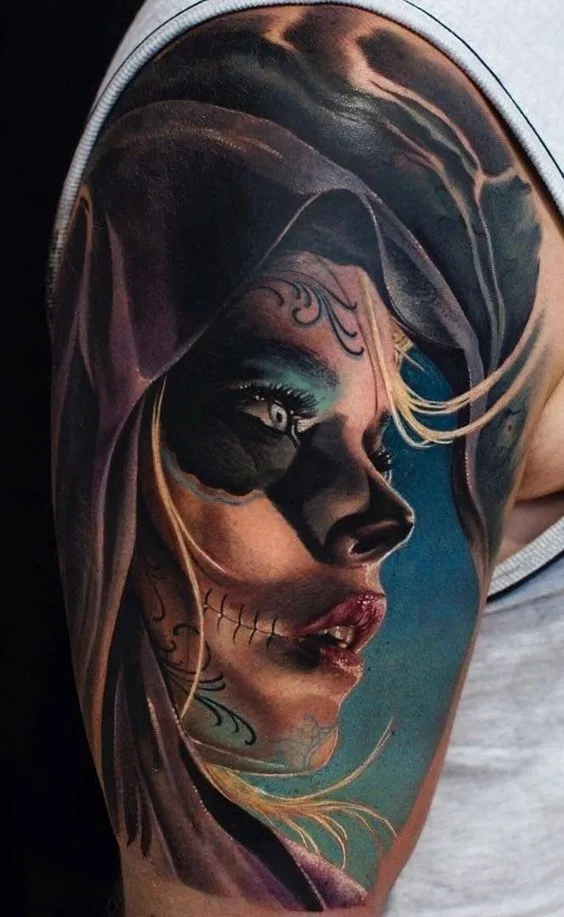
Papel Picado tattoos draw inspiration from these vibrant paper cutouts and translate them into intricate designs inked onto the skin. The detailed nature of these tattoos requires skilled artists who can capture the essence of the original papercraft while adapting it for permanent body art.
These tattoos serve as a way to honor Mexican traditions and folklore.
Both La Loteria and Papel Picado tattoos hold deep cultural significance and allow individuals to express their connection to Mexican traditions. These tattoos serve as visual representations of the vibrant folklore, customs, and artistry that are an integral part of Mexican culture.
For those who have a strong affinity for Mexican traditions, getting a La Loteria or Papel Picado tattoo is a way to carry a piece of their heritage with them wherever they go. It is also an opportunity to share their love for Mexican culture with others and spark conversations about the rich history behind these tattoo designs.
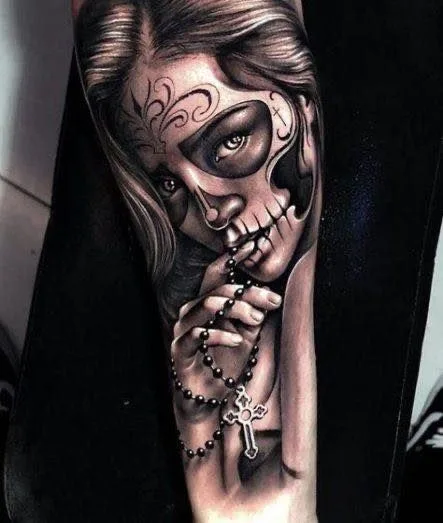
Chicano Tattoo Style: Influences and Notable Artists
The Chicano tattoo style has a rich history that emerged from the Mexican-American community in California during the 1940s. This unique tattoo style was heavily influenced by prison culture and the experiences of Mexican-Americans living in California at the time.
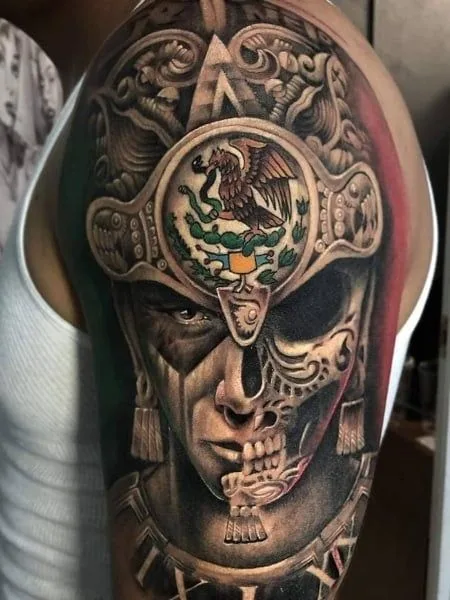
Chicano tattoos often incorporate elements such as barbed wire, gang symbols, religious imagery, and cultural icons to reflect the struggles and identity of the wearers. These tattoos serve as a visual representation of their heritage and personal narratives.
One of the notable influences on Chicano tattoo style is prison culture. In prisons, tattoos became a way for inmates to express their affiliation with certain gangs or groups while also marking their status within the prison hierarchy. Barbed wire designs are commonly seen in Chicano tattoos, symbolizing confinement and struggle within these prison walls.
Gang symbols are another prevalent element in Chicano tattoos. These symbols represent loyalty, brotherhood, and belonging to a specific gang or neighborhood. They often depict initials or numbers associated with particular gangs or street affiliations.
Religious imagery plays an essential role in Chicano tattoo style as well. Many individuals choose to incorporate images of saints, crosses, or praying hands into their tattoos as a way to showcase their faith and seek protection throughout their lives.
Cultural icons like La Virgen de Guadalupe (Our Lady of Guadalupe) also hold significant meaning in Chicano tattoo artistry. La Virgen de Guadalupe is an iconic figure in Mexican culture and represents strength, resilience, and devotion. Her image is frequently depicted in vibrant colors with intricate details to honor her significance.
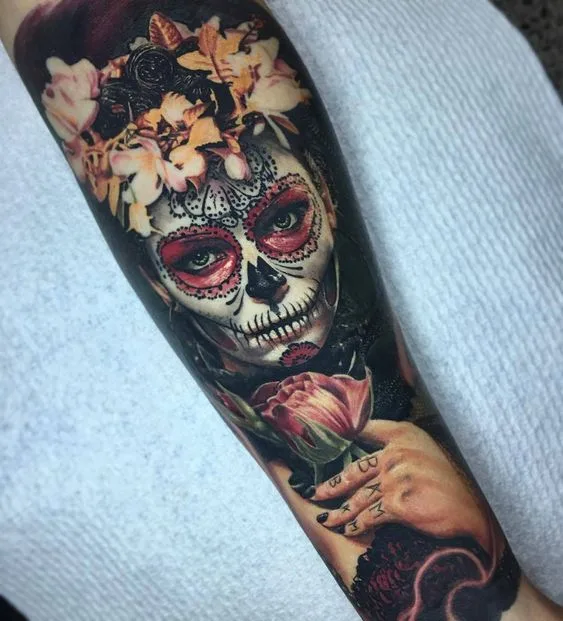
When discussing notable artists within the Chicano tattoo community, two names stand out: Freddy Negrete and Jack Rudy. Freddy Negrete is widely recognized for his contributions to black-and-gray realism within Chicano tattooing. His work showcases incredible attention to detail and a mastery of shading techniques that bring tattoos to life.
Jack Rudy is another influential figure in Chicano tattooing. He is known for his expertise in fine-line black-and-gray tattoos, often featuring intricate patterns and realistic portraits. Rudy’s work has had a significant impact on the evolution of Chicano tattoo style, inspiring countless artists to explore this unique aesthetic.
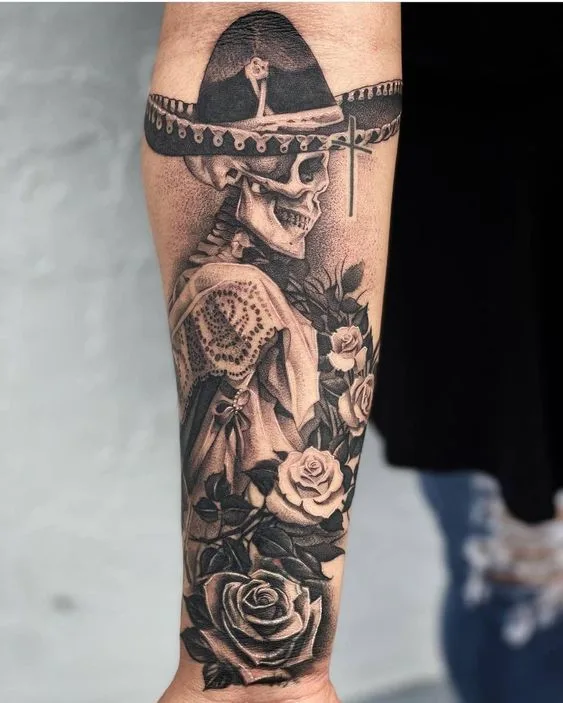
Hummingbird and Natural Motifs in Mexican Tattoo Art
Hummingbirds symbolize joy, love, and freedom in Mexican tattoo art.
In Mexican-inspired tattoo art, hummingbirds hold a significant meaning. These tiny creatures are symbols of joy, love, and freedom. Known for their vibrant colors and graceful movements, hummingbirds capture the essence of life’s beauty. They are often depicted with outstretched wings or hovering over flowers, showcasing their delicate nature. The inclusion of hummingbirds in tattoos adds a touch of positivity and happiness to the overall design.
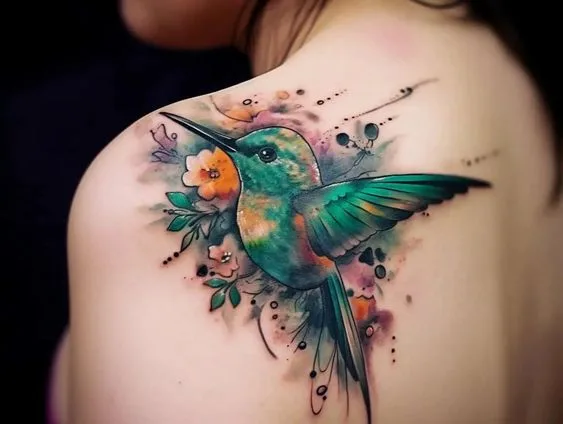
Natural motifs like flowers, cacti, and butterflies are commonly incorporated into Mexican-inspired tattoos.
Mexican tattoo art is heavily influenced by the country’s rich natural landscape. Flowers such as roses, marigolds, and lilies are frequently seen in these tattoos. Each flower carries its own symbolism – roses represent love and passion while marigolds are associated with Day of the Dead celebrations. These floral elements not only add aesthetic appeal but also convey deeper meanings.
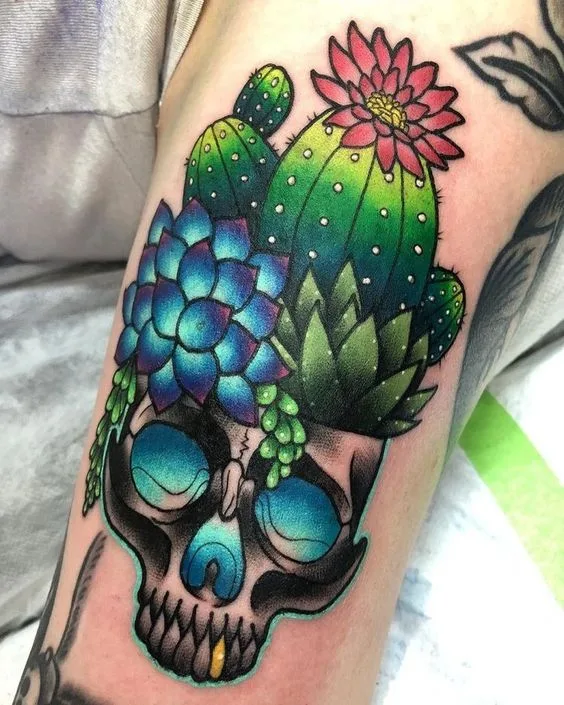
Cacti are another popular natural motif found in Mexican-inspired tattoos. With their resilience and ability to thrive in harsh environments, cacti symbolize strength and endurance. They serve as reminders that one can overcome challenges and grow even in difficult circumstances.
Butterflies also find their place in Mexican tattoo art due to their transformative journey from caterpillar to butterfly. They represent metamorphosis, change, and rebirth. Just like butterflies emerge from cocoons as beautiful creatures, individuals can undergo personal growth and transformation throughout their lives.
These elements add beauty and symbolism to the overall design.
The incorporation of hummingbirds along with natural motifs like flowers, cacti, and butterflies adds both beauty and symbolism to Mexican-inspired tattoos. Each element contributes to the narrative behind the artwork while enhancing its visual appeal.
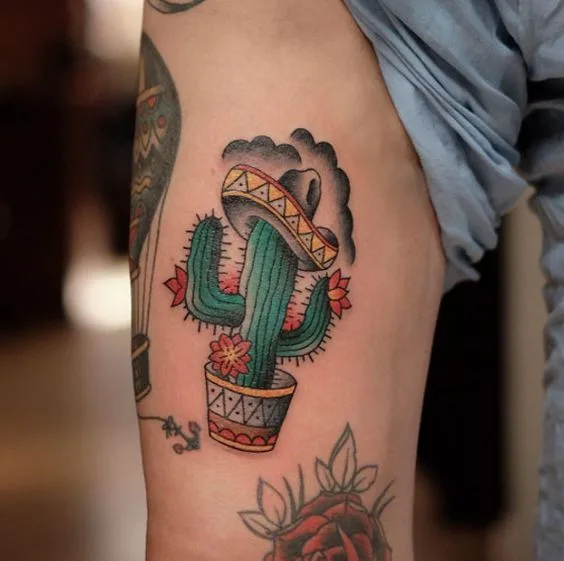
By combining these symbols together or individually within a tattoo design, individuals can express their own personal stories and beliefs. The vibrant colors, intricate details, and meaningful representations make Mexican-inspired tattoos stand out as unique works of art.
These tattoos serve as a way to connect with Mexican culture and heritage. They pay homage to the traditions, folklore, and natural beauty that define the country’s artistic identity.
Religious Symbolism: Virgin Mary and Beyond
The religious symbolism in Mexican-inspired tattoos is a significant aspect of this art form. One of the most prominent figures in these tattoos is the Virgin Mary, who holds great importance in Mexican culture. The image of the Virgin Mary represents faith, devotion, and protection. Many individuals choose to incorporate her likeness into their tattoos as a way to express their deep spirituality.
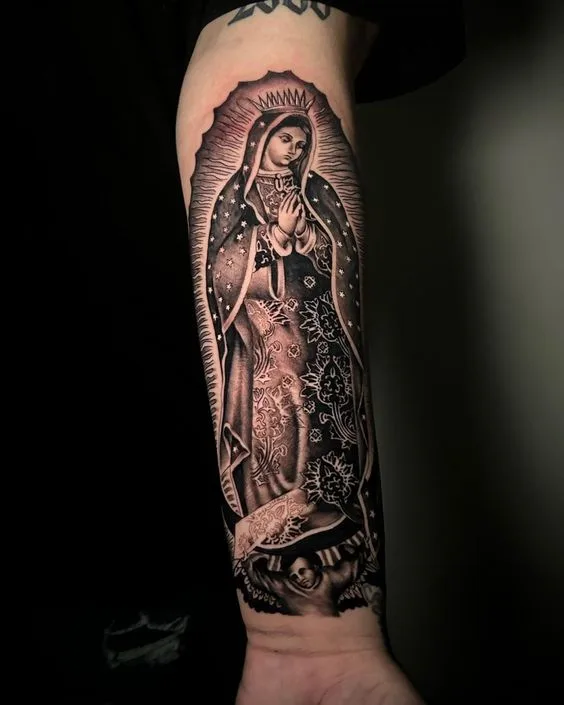
In addition to the Virgin Mary, other religious symbols are often integrated into Mexican-inspired tattoo designs. Crosses, for example, hold immense significance and are commonly seen in these tattoos. The cross symbolizes sacrifice, redemption, and eternal life. It serves as a powerful reminder of one’s faith and belief system.
Rosaries also play a vital role in Mexican tattoo art. These beaded prayer chains are used during Catholic rituals and symbolize devotion to God and the practice of prayer. Incorporating a rosary into a tattoo design can represent spiritual connection and dedication.
Angel wings are another popular religious symbol found in Mexican-inspired tattoos. These wings symbolize protection, guidance, and divine presence. They serve as a visual representation of one’s belief in guardian angels watching over them.
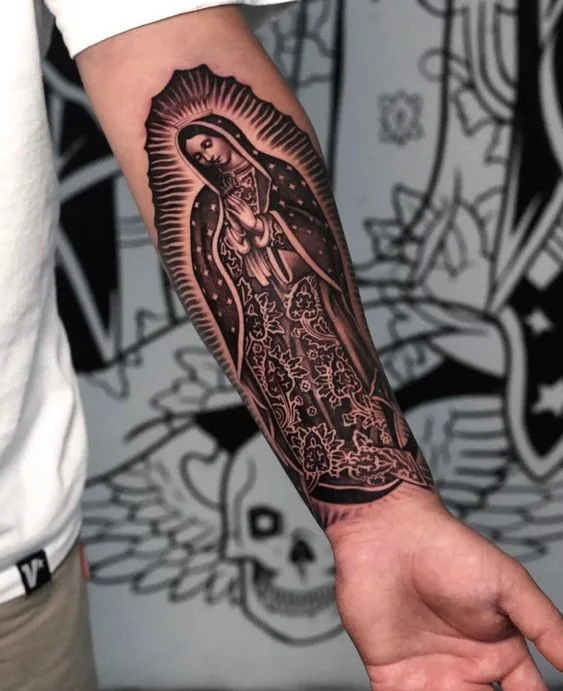
Mexican-inspired tattoos that incorporate religious symbols not only reflect an individual’s spirituality but also serve as visual reminders of their cultural heritage. These tattoos allow people to proudly display their beliefs while paying homage to their Mexican roots.
The use of religious symbolism in Mexican-inspired tattoos goes beyond personal expression; it also carries cultural significance within the larger community. In Mexico, religion plays an integral role in daily life, with Catholicism being the dominant faith. Tattoos featuring religious symbols act as visible markers of identity and can foster a sense of belonging within the community.
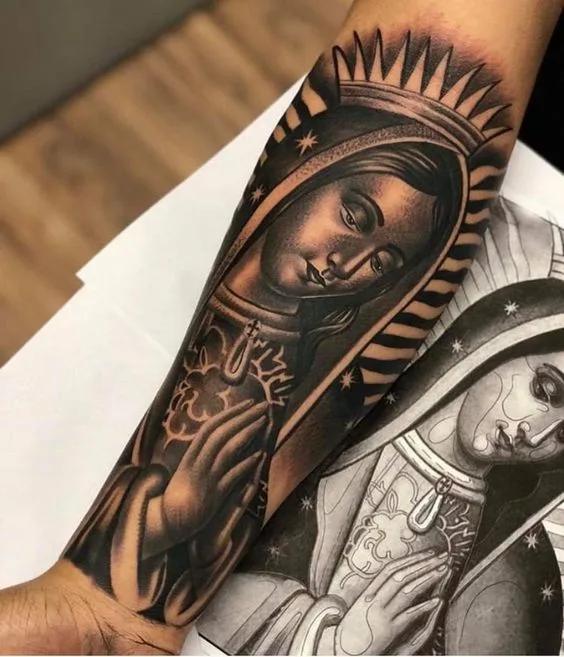
To summarize:
- The Virgin Mary holds great importance in Mexican tattoo art due to her representation of faith and devotion.
- Other religious symbols such as crosses, rosaries, and angel wings are commonly incorporated into Mexican-inspired tattoos.
- These tattoos serve as a visual expression of one’s spirituality and cultural heritage, while also acting as markers of identity within the larger community.
Honoring Heritage with Family and Cultural Tattoos
Family holds a special place in Mexican culture, and it comes as no surprise that family-themed tattoos are highly valued among Mexicans. These tattoos serve as a way to pay homage to one’s heritage and roots while also celebrating the importance of family bonds.
Cultural symbols play a significant role in Mexican-inspired tattoos, allowing individuals to showcase their connection to their cultural heritage. The Mexican flag is a popular choice, symbolizing national pride and unity. Incorporating iconic landmarks like the Mayan ruins can also add a touch of history and cultural significance to these tattoos.
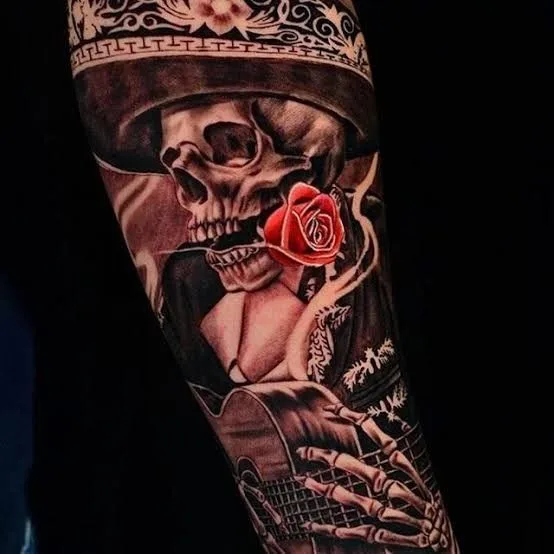
Mexican-inspired tattoos not only honor one’s own heritage but also serve as a tribute to loved ones who have passed away. Many individuals choose to include the names or portraits of their deceased family members in their tattoos, keeping their memory alive. These tattoos become powerful reminders of the love and support received from those who came before them.
The artistry behind these tattoos is another aspect that makes them so appealing. Talented tattoo artists use vibrant colors, intricate designs, and attention to detail to bring these cultural symbols and family tributes to life on the skin. Each tattoo is unique and personal, reflecting the individual’s story and connection to their heritage.
Mexican-inspired tattoos are more than just ink on skin; they represent intangible cultural heritage passed down through generations. They serve as visual representations of traditions, values, and beliefs that have shaped Mexican identity over time. By wearing these symbols proudly on their bodies, individuals express their commitment to preserving their cultural legacy.
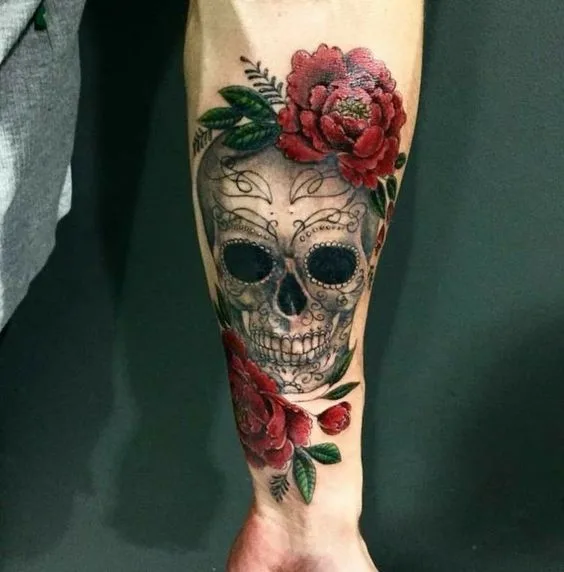
These meaningful tattoos have gained popularity not only within the Mexican community but also among people from different backgrounds who appreciate the rich culture Mexico has to offer. They provide an opportunity for cross-cultural exchange and understanding by showcasing Mexico’s diverse traditions.
Mexican Artistry: Huichol Influence and Iconic Figures
Huichol art, with its vibrant colors and intricate beadwork, has had a significant influence on Mexican tattoo art. The unique style of Huichol art is characterized by its bold use of colors and the meticulous craftsmanship involved in creating intricate patterns using tiny beads. This traditional art form has found its way into the world of tattoos, adding a touch of Mexican culture to body art.
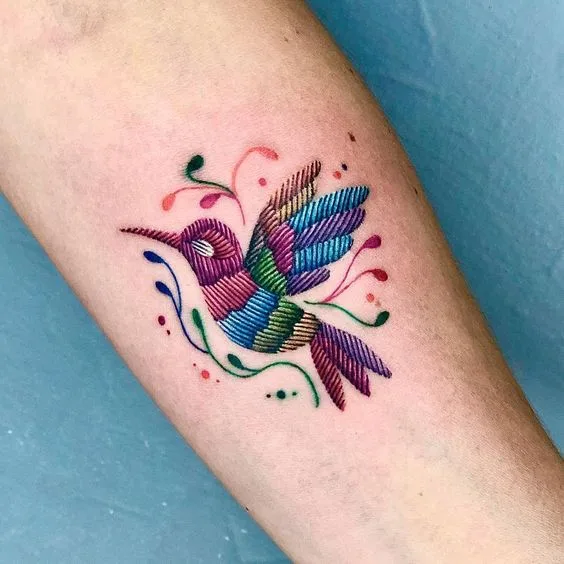
One of the most notable aspects of Huichol-inspired tattoos is the vibrant color palette used. These tattoos often feature bold shades of red, blue, yellow, and green, reflecting the bright hues commonly seen in traditional Huichol artworks. The use of these vivid colors adds an eye-catching element to the tattoos, making them visually striking and captivating.
In addition to their colorful nature, Huichol-inspired tattoos also incorporate intricate patterns and designs. Artists draw inspiration from traditional Huichol motifs such as geometric shapes and symbols representing elements from nature like animals or plants. These detailed designs require precision and skill to recreate faithfully on skin.
Mexican tattoo artists have also drawn inspiration from iconic figures in Mexican history when creating their designs. Frida Kahlo, one of Mexico’s most celebrated artists, is frequently depicted in tattoos as a symbol of artistic legacy and female empowerment. Her distinct features – her unibrow, floral headpieces, and vibrant clothing – make for instantly recognizable tattoo designs that pay homage to her contribution to Mexican art.
Another prominent figure depicted in Mexican-inspired tattoos is Emiliano Zapata, a leading figure during the Mexican Revolution who fought for land reform and peasant rights. His mustached face adorned with a sombrero has become an enduring symbol of rebellion and national pride in Mexico.
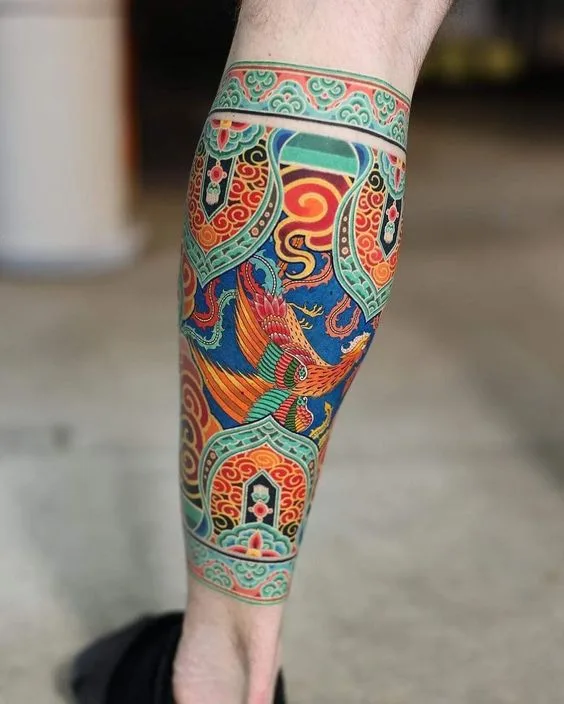
These tattoos serve as a celebration of Mexico’s rich cultural heritage while honoring influential individuals who have shaped the country’s history. They provide individuals with an opportunity to showcase their connection to Mexican culture and express their national pride through body art.
Mexican-inspired tattoos have become popular not only among Mexicans but also in the global tattoo community. The infusion of Huichol art and iconic Mexican figures into tattoo designs has created a unique style that stands out in the world of body art. These tattoos serve as a visual representation of Mexico’s vibrant artistic traditions and cultural identity, transcending borders and resonating with people from different backgrounds.
Incorporating Mexican Folk Art into Modern Tattoos
Mexican folk art has a rich history and vibrant aesthetic that continues to inspire various forms of artistic expression. One such form is the world of tattoos, where artists are incorporating elements of Mexican folk art into their designs. From alebrijes, colorful mythical creatures, to retablos, religious paintings, these traditional art forms are being reimagined in modern tattoo styles.
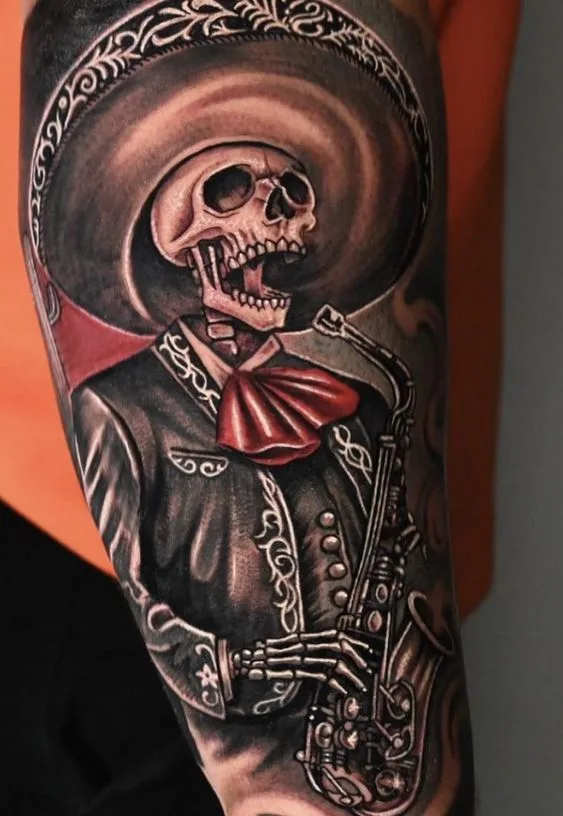
Tattoo artists are skillfully blending the intricate details and bold colors of Mexican folk art with contemporary tattoo techniques. This fusion creates unique pieces that showcase the harmony between old and new, preserving Mexican cultural heritage within a modern context.
The first way Mexican folk art influences modern tattoo designs is through alebrijes. These fantastical creatures are often depicted with vivid colors and intricate patterns. Tattoo artists draw inspiration from these mythical beings to create stunning pieces that capture the essence of Mexican folklore. By incorporating alebrijes into their tattoos, individuals can celebrate their connection to Mexican culture while showcasing a visually striking piece of body art.
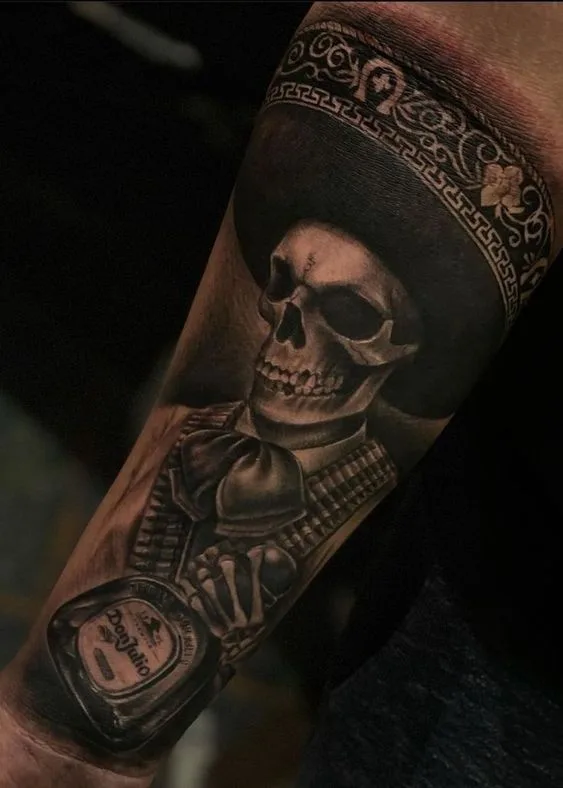
Another way that Mexican folk art finds its way into modern tattoos is through retablos. Retablos are religious paintings typically created as offerings or expressions of gratitude for divine intervention. These intricate artworks often depict scenes from religious stories or personal experiences. Tattoo artists incorporate elements from retablos into their designs, allowing individuals to carry symbols of faith and spirituality on their skin.
Artists use a variety of techniques to bring these traditional art forms to life on the skin. They carefully consider color palettes inspired by traditional Mexican artwork and utilize shading techniques to add depth and dimensionality to the designs. The attention to detail in these tattoos helps capture the essence of Mexican folk art while adapting it for a new medium.
Conclusion
In summary, Mexican-inspired tattoos offer a vibrant and diverse range of artistic expressions that celebrate the rich cultural heritage of Mexico. From Mesoamerican motifs to Chicano tattoo styles, religious symbolism to iconic figures, these tattoos showcase the depth and beauty of Mexican artistry. La Calavera Catrina and Mexican skull imagery pay homage to the Day of the Dead, while La Loteria and Papel Picado tattoos honor traditional Mexican games and paper cutting. Hummingbirds and natural motifs highlight the country’s biodiversity, while religious symbols like the Virgin Mary hold deep spiritual significance.
By incorporating Mexican folk art and Huichol influences into modern tattoo designs, artists are able to create unique and meaningful pieces that reflect both personal stories and cultural pride. Whether it’s honoring family heritage or embracing Mexican traditions, these tattoos serve as powerful reminders of identity and belonging. As you consider your own tattoo journey, take inspiration from the diverse array of Mexican-inspired designs available. Seek out talented artists who can bring your vision to life while respecting the cultural significance behind these symbols.
Frequently Asked Questions
FAQ
What are Mesoamerican tattoos?
Mesoamerican tattoos refer to the body art inspired by the ancient civilizations of Mexico and Central America, such as the Aztecs, Mayans, and Olmecs. These tattoos often incorporate symbols, deities, and motifs from these cultures, celebrating their rich history and cultural heritage.
What is the significance of La Calavera Catrina in Mexican tattoo art?
La Calavera Catrina is a famous symbol in Mexican tattoo art. It represents a stylishly dressed female skeleton and serves as a reminder of the inevitability of death. This iconic image originated from an etching by Mexican artist José Guadalupe Posada and has become synonymous with the Day of the Dead festivities.
What are some popular Mexican tattoo motifs?
Popular Mexican tattoo motifs include La Loteria cards, which feature various characters and symbols representing Mexican culture; Papel Picado designs, which are intricate paper cutouts used in celebrations; hummingbirds, known for their vibrant colors; and natural elements like flowers and cacti.
Who are some notable artists in Chicano tattoo style?
Chicano tattoo style emerged from Mexican-American communities in California. Some notable artists in this style include Freddy Negrete, Jack Rudy, and Mark Mahoney. They have played significant roles in popularizing black-and-gray realism combined with cultural themes.
How does religious symbolism manifest in Mexican tattoo art?
Religious symbolism is prominent in Mexican tattoo art. The Virgin Mary is a commonly depicted figure due to her importance in Catholicism. Other religious symbols may include crosses, angels, saints, or depictions of traditional indigenous deities fused with Christian iconography.
How can Huichol influence be seen in Mexican tattoo art?
Huichol influence can be seen through vibrant colors and intricate patterns inspired by Huichol beadwork. This indigenous group from western Mexico has a distinct artistic style that incorporates spiritual and cultural elements. Mexican tattoo artists often incorporate Huichol motifs to honor their heritage and showcase their artistry.
How is Mexican folk art incorporated into modern tattoos?
Mexican folk art, such as Alebrijes (colorful mythical creatures) or Day of the Dead imagery, is often incorporated into modern tattoos. Artists blend traditional folk art elements with contemporary tattoo techniques, creating unique designs that pay homage to Mexican culture while embracing individual creativity.